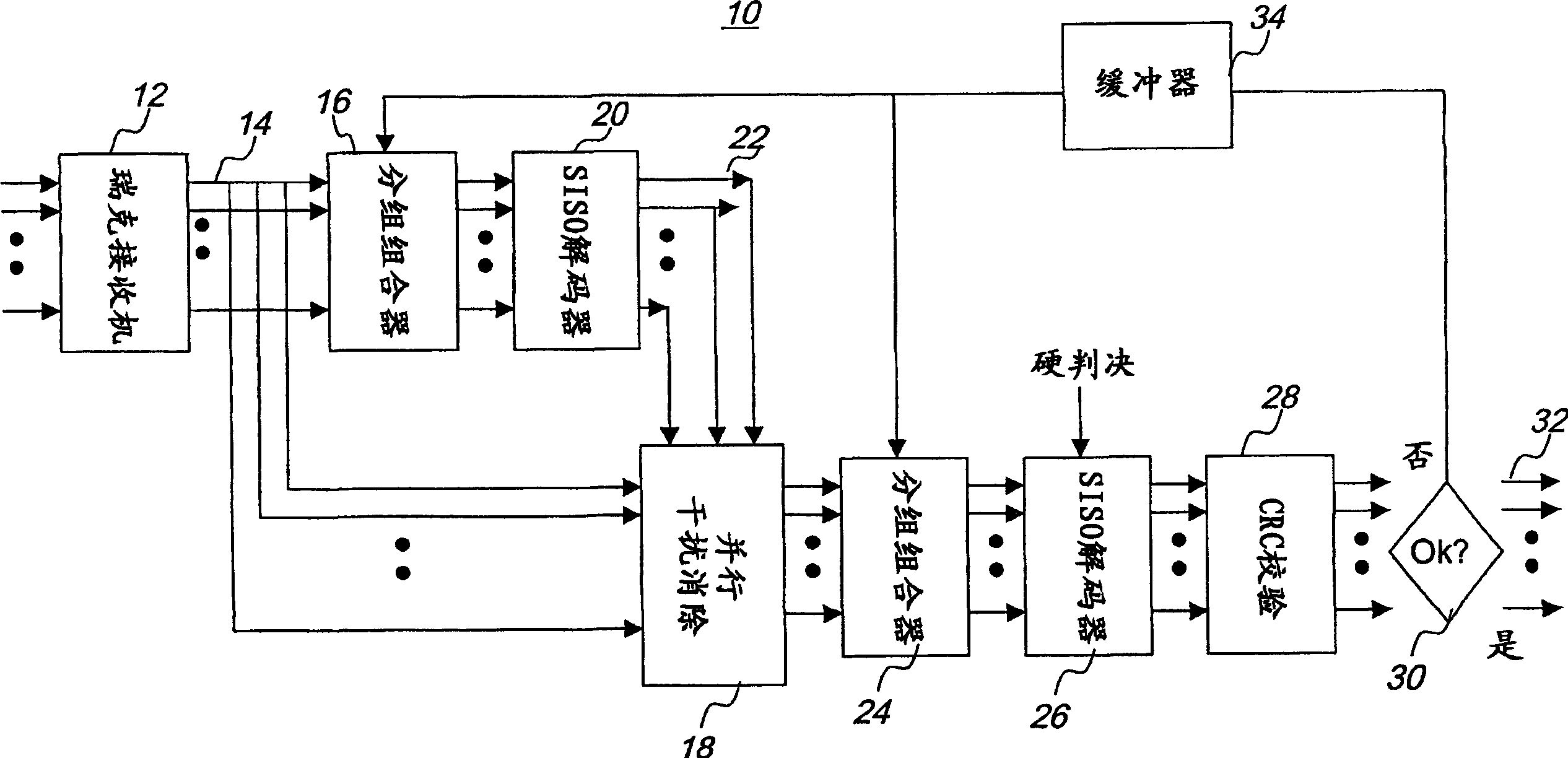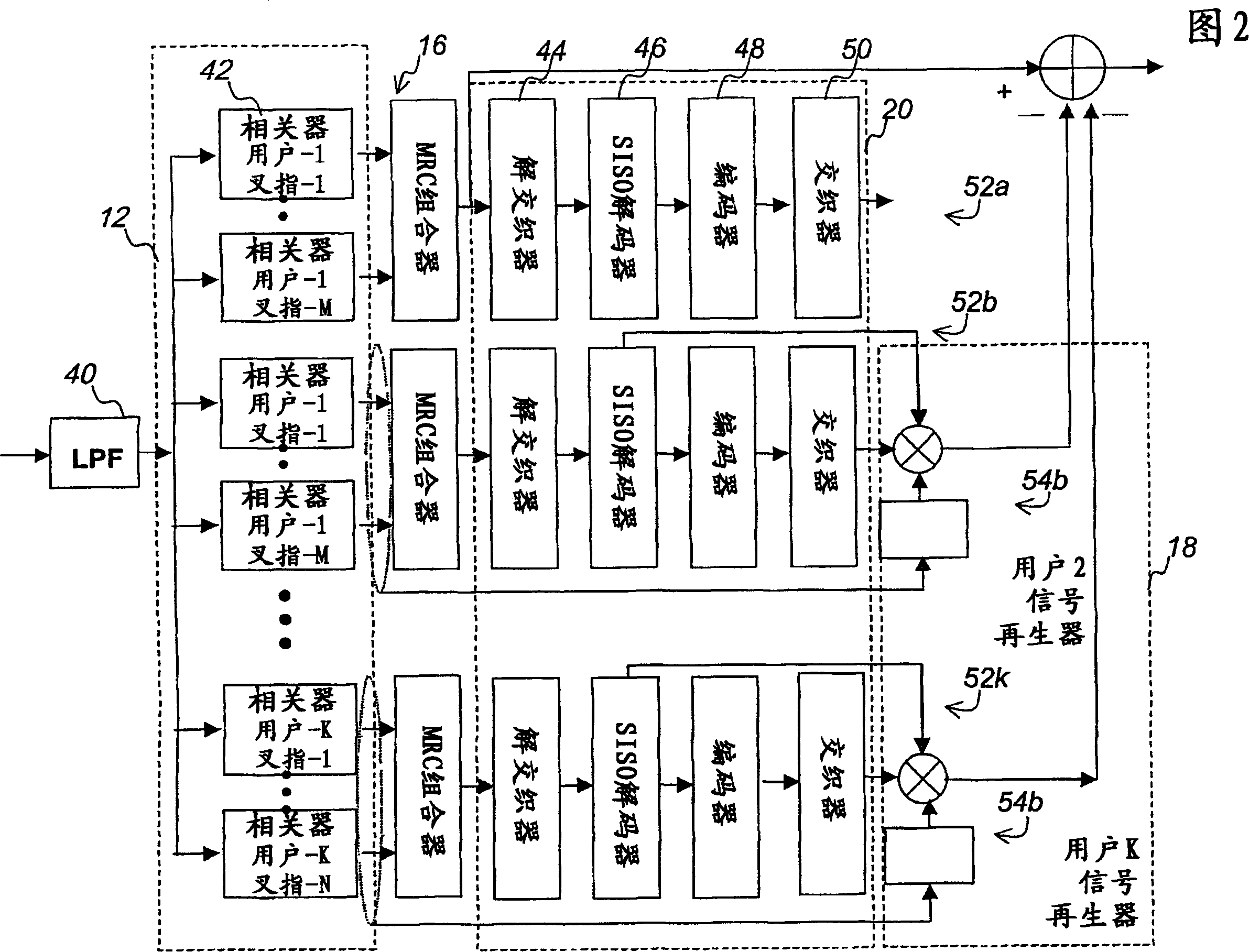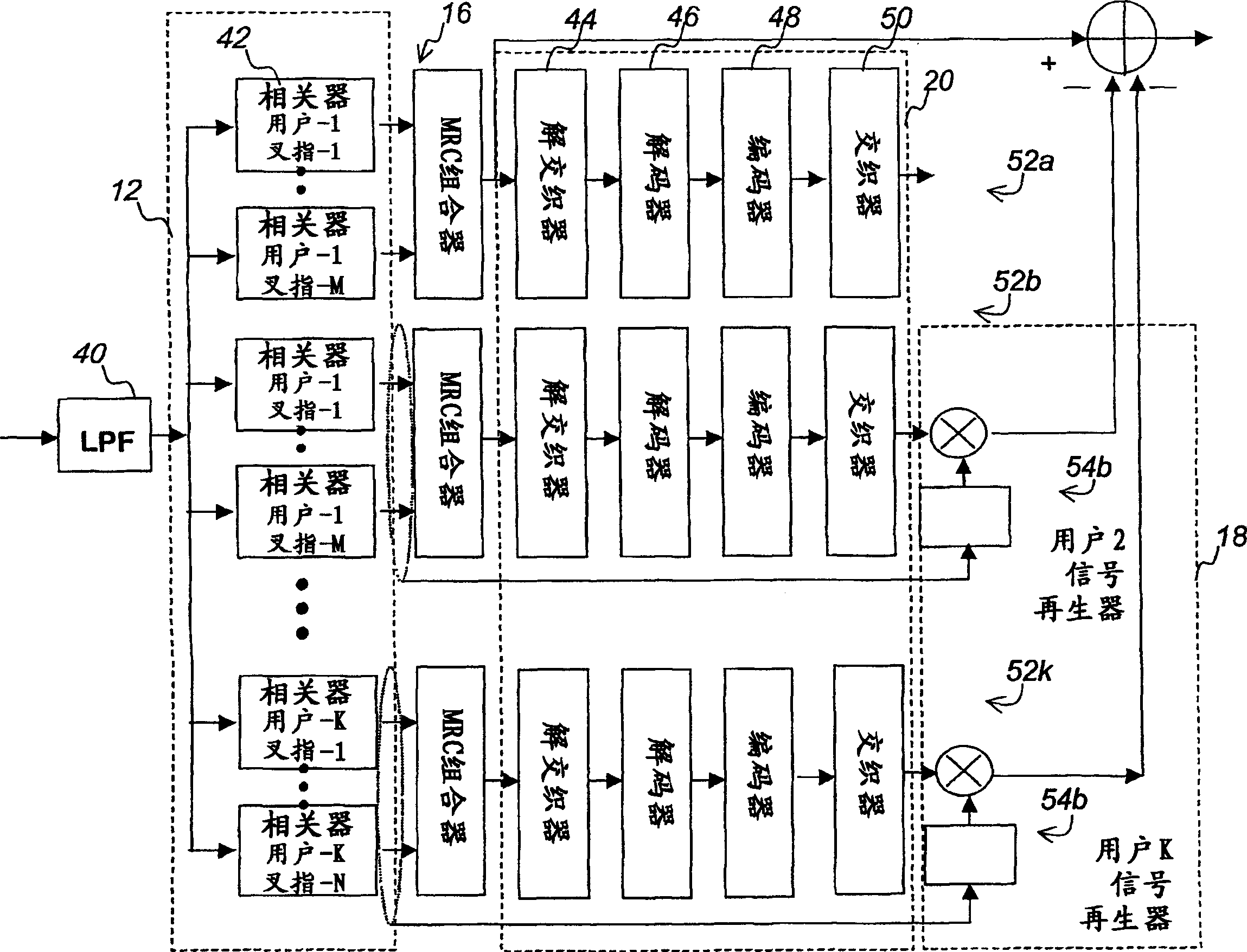Multi-user detector for direct sequence-code division multiple access (DS/CDMA) channels
A multi-user detection and multi-user technology, applied in the direction of electrical components, transmission systems, etc., can solve problems such as not optimal performance
- Summary
- Abstract
- Description
- Claims
- Application Information
AI Technical Summary
Problems solved by technology
Method used
Image
Examples
Embodiment Construction
[0021] see figure 1 , a block diagram illustrating a multi-user detector (MUD) according to an embodiment of the present invention. The MUD 10 includes a rake receiver 12 having a plurality of outputs 14 connected to a packet combiner 16 and a parallel interference cancellation (PIC) section 18 . The output of the packet combiner 16 is used in a soft input soft output (SISO) decoder 20 . The SISO decoder 20 has multiple outputs 22 for decoding values. A plurality of outputs 22 are connected to the PIC section 18 . The output of the PIC section 18 is then input to a second packet combiner 24 whose output is used as input to a second SISO decoder 26 . The output of the second SISO decoder is input to the CRC check 28. The decision section 30 allows the received data packet to be output at 32, if no errors are found, otherwise the packet is sent to the packet buffer 48 and ARQ is sent to the transmitter requesting retransmission of the packet.
[0022] In operation, the firs...
PUM
 Login to View More
Login to View More Abstract
Description
Claims
Application Information
 Login to View More
Login to View More - R&D
- Intellectual Property
- Life Sciences
- Materials
- Tech Scout
- Unparalleled Data Quality
- Higher Quality Content
- 60% Fewer Hallucinations
Browse by: Latest US Patents, China's latest patents, Technical Efficacy Thesaurus, Application Domain, Technology Topic, Popular Technical Reports.
© 2025 PatSnap. All rights reserved.Legal|Privacy policy|Modern Slavery Act Transparency Statement|Sitemap|About US| Contact US: help@patsnap.com



